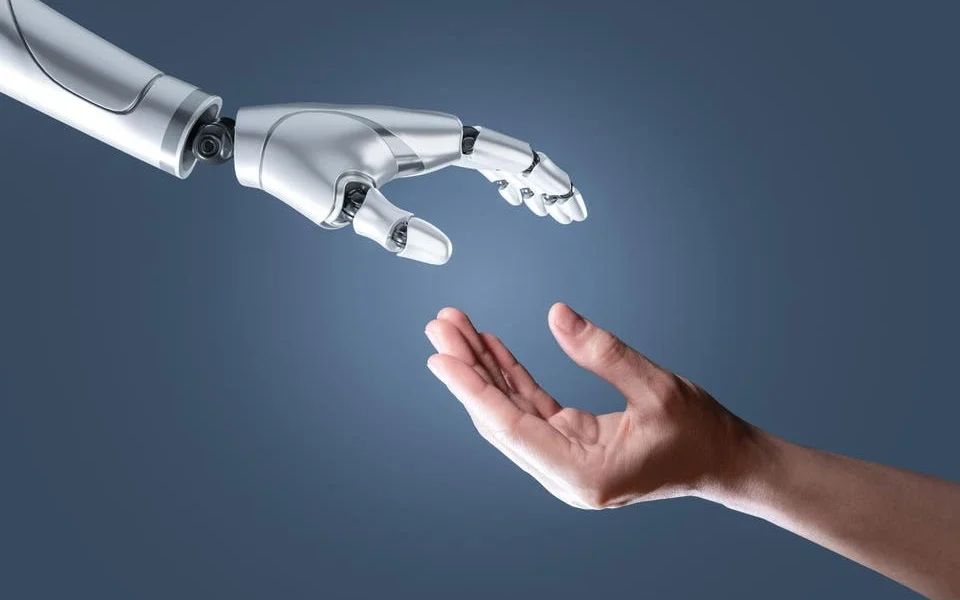The Role of Artificial and Human Intelligence in Innovation
The integration of artificial intelligence (AI) into innovation processes has been a topic of significant interest and debate in recent years. As we look ahead to 2024, the relationship between AI and human intelligence will continue to evolve, with a focus on achieving the optimal blend of these two elements. The impact of AI on innovation has been widely discussed, but it’s crucial to recognize the indispensable role that human intelligence plays in driving meaningful progress. This article explores the pivotal role of both AI and human intelligence in innovation and the synergy that exists between the two.
Human Creativity in Ideation
The process of generating innovative ideas for new products and solutions is a prime example of the intersection between AI and human intelligence. While AI can rapidly process data and provide initial suggestions, it’s the human touch that infuses creativity and unique insights into the ideation process. Human creativity plays a vital role in refining and expanding upon AI-generated suggestions, leading to the development of truly disruptive and valuable innovations.
Human Scrutiny of AI Suggestions
While AI excels at processing and analyzing data, humans bring a level of understanding and contextual awareness that is essential for accurate decision-making. Human teams have the expertise to scrutinize AI-generated suggestions, ensuring that biases are identified and rectified. Additionally, humans are responsible for verifying the accuracy and relevance of the data that feeds into AI systems, thereby upholding the integrity of the innovation process.
Role of Human Diligence in Governance
Effective governance is critical for driving scalable and repeatable innovation. While AI can contribute to creating and refining governance models, human input is indispensable in infusing nuance and adaptability into these systems. Human decision-makers provide the necessary flexibility to adjust governance models based on evolving circumstances, enabling AI to learn and adapt in response to dynamic real-world scenarios.
Embracing Human Empathy in Innovation
Empathy, a distinctly human trait, holds immense significance in the innovation landscape. Understanding and addressing human challenges and emotions is pivotal in creating products that resonate with users. While AI systems can process vast amounts of data, they lack the innate empathy that humans possess. Human teams bring a deep understanding of customer needs and experiences, enabling them to incorporate empathy-driven insights into the innovation process.
The Synergy of AI and Human Intelligence
As we advance into 2024 and beyond, it’s evident that the optimal approach to innovation involves harnessing the strengths of both AI and human intelligence. Rather than viewing AI as a sole driver of innovation, it should be seen as a powerful tool that complements and amplifies human creativity, scrutiny, diligence, and empathy. The synergy between AI and humans accelerates the innovation process, leading to outcomes that marry speed and quality.
The Evolution of Innovation Governance
The realm of innovation governance has experienced notable transformations in recent years, with AI playing a pivotal role in shaping governance models. As organizations navigate the complexities of governance in the innovation space, it’s imperative to acknowledge the evolving interplay between AI systems and human decision-makers in establishing effective governance frameworks.
The Adaptive Nature of Governance Models
In response to dynamic market forces and unexpected disruptions, innovation governance models have shifted from rigid structures to adaptive frameworks that accommodate situational flexibility. AI has contributed to this evolution by offering insights and recommendations, but human decision-makers play a critical role in enacting these adaptive changes based on their nuanced understanding of the business landscape.
Human Input for Contextual Decision-making
While AI can provide data-driven guidance for decision-making, human leaders inject context and interpret these recommendations through the lens of their organizational knowledge and experience. The human element within governance ensures that decisions align with broader business objectives and consider the nuanced interplay of internal and external factors that shape the innovation strategy.
Cultivating Adaptive AI Systems
The evolution of governance models is intricately linked to the capacity of AI systems to adapt and learn from real-time adjustments. Human input serves as a catalyst for refining AI systems, enabling them to incorporate dynamic governance changes and adjust to emerging trends and challenges. This iterative process of human-AI collaboration fosters the development of governance models that reflect both agility and resilience.
AI and Human Synergy in Forecasting
Forecasting plays a pivotal role in guiding innovation strategies and resource allocation within organizations. The convergence of AI-powered predictive analytics and human insights generates a potent synergy that enhances the accuracy and relevance of forecasting activities, leading to informed and strategic decision-making.
AI-Driven Predictive Analytics
AI‘s ability to process large volumes of data and identify patterns and trends has significantly augmented the predictive analytics landscape. Through machine learning algorithms and predictive modeling, AI systems can provide valuable forecasts and scenarios that serve as the foundation for strategic planning and resource allocation.
Human Interpretation and Contextualization
Despite the prowess of AI in generating forecasts, human expertise is indispensable in interpreting and contextualizing these predictions within the specific dynamics of the organization and market. Human teams possess the nuanced understanding necessary to evaluate the implications of AI-generated forecasts, integrating qualitative insights and domain expertise into the decision-making process.
Augmented Forecasting Capabilities
The collaboration between AI-driven predictive analytics and human interpretation augments the forecasting capabilities of organizations, enabling them to anticipate market shifts, consumer trends, and competitive dynamics with heightened accuracy. This synergy empowers decision-makers to proactively shape their innovation strategies and investments based on a comprehensive understanding of future scenarios.
The Future Landscape of AI-Driven Innovation
Looking ahead to 2024, the trajectory of AI-driven innovation promises a landscape characterized by deep collaboration between AI systems and human intelligence. The ongoing evolution of AI technology, coupled with the nuanced input of human innovators, will continue to redefine the contours of innovation and steer organizations toward sustainable growth and competitive advantage.
AI-enabled Disruptive Ideation
The synergy between AI technologies and human creativity will catalyze the generation of disruptive ideas and novel concepts, laying the groundwork for breakthrough innovations that address emerging market needs and consumer demands. AI will serve as a powerful catalyst for accelerating the ideation phase, while human intervention will infuse these ideas with nuanced insights and empathetic considerations.
Agile Governance Infused with Human Insight
The governance of innovation processes will embrace agility and adaptability, shaped by AI-driven insights and guided by human decision-makers who inject contextual understanding and strategic foresight into the governance framework. The interplay between AI-enabled governance and human insight will foster governance models that seamlessly navigate dynamic market conditions while upholding ethical and strategic imperatives.
Refined Forecasting Anchored by Human Expertise
Future forecasting activities will witness the convergence of AI-driven predictive analytics and human expertise, yielding forecasts that reflect a profound understanding of market dynamics and consumer behavior. The incorporation of human insights into AI-generated forecasts will position organizations to make informed and proactive decisions, optimizing their innovation strategies and resource allocation.
Conclusion
In the confluence of innovation and AI, the symbiotic relationship between artificial and human intelligence emerges as the cornerstone of transformative progress. As organizations navigate the evolving landscape of innovation, the harmonious integration of AI technologies and human expertise will herald an era of unparalleled creativity, governance, and forecasting capabilities. Embracing this alliance will empower innovators to chart a course towards sustained success and enduring impact in the dynamic and competitive business ecosystem of 2024 and beyond.
Source: forbes








No Comments